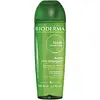What's inside
What's inside
 Key Ingredients
Key Ingredients

 Benefits
Benefits

 Concerns
Concerns

 Ingredients Side-by-side
Ingredients Side-by-side

Water
Skin ConditioningSodium Laureth Sulfate
CleansingSodium Cocoamphoacetate
CleansingPEG-60 Almond Glycerides
EmulsifyingSodium Lauroyl Sarcosinate
CleansingCoco-Betaine
CleansingPEG-90 Glyceryl Isostearate
CleansingSodium Pg-Sulfonate
HumectantSalicylic Acid
MaskingPiroctone Olamine
PreservativeAcrylates/C10-30 Alkyl Acrylate Crosspolymer
Emulsion StabilisingPyridoxine Hcl
Skin ConditioningUndecyl Alcohol
AntiseborrhoeicZinc Gluconate
Skin ConditioningPolyquaternium-10
Parfum
MaskingDisodium EDTA
Sodium Hydroxide
BufferingZinc Pyrithione
AntiseborrhoeicLaureth-2
CleansingMannitol
HumectantXylitol
HumectantOleyl Alcohol
EmollientRhamnose
HumectantJuniperus Oxycedrus Wood Extract
PerfumingZanthoxylum Bungeanum Fruit Extract
Skin ConditioningSodium Acetate
BufferingSodium Chloride
MaskingCitric Acid
BufferingSodium Polynaphthalenesulfonate
Emulsion StabilisingIsopropyl Alcohol
SolventPotassium Sorbate
PreservativeSodium Benzoate
MaskingFructooligosaccharides
HumectantCaprylic/Capric Triglyceride
MaskingLaminaria Ochroleuca Extract
Skin ConditioningWater, Sodium Laureth Sulfate, Sodium Cocoamphoacetate, PEG-60 Almond Glycerides, Sodium Lauroyl Sarcosinate, Coco-Betaine, PEG-90 Glyceryl Isostearate, Sodium Pg-Sulfonate, Salicylic Acid, Piroctone Olamine, Acrylates/C10-30 Alkyl Acrylate Crosspolymer, Pyridoxine Hcl, Undecyl Alcohol, Zinc Gluconate, Polyquaternium-10, Parfum, Disodium EDTA, Sodium Hydroxide, Zinc Pyrithione, Laureth-2, Mannitol, Xylitol, Oleyl Alcohol, Rhamnose, Juniperus Oxycedrus Wood Extract, Zanthoxylum Bungeanum Fruit Extract, Sodium Acetate, Sodium Chloride, Citric Acid, Sodium Polynaphthalenesulfonate, Isopropyl Alcohol, Potassium Sorbate, Sodium Benzoate, Fructooligosaccharides, Caprylic/Capric Triglyceride, Laminaria Ochroleuca Extract
Water
Skin ConditioningCaprylyl/Capryl Glucoside
CleansingPEG-150 Distearate
EmulsifyingPEG-6 Caprylic/Capric Glycerides
EmulsifyingPEG-15 Cocopolyamine
EmulsifyingSodium Lauroyl Oat Amino Acids
CleansingLactic Acid
BufferingSodium Citrate
BufferingCaprylyl Glycol
EmollientQuaternium-80
Propylene Glycol
HumectantMannitol
HumectantXylitol
HumectantRhamnose
HumectantPhenoxyethanol
PreservativeTetrasodium EDTA
Ethylhexylglycerin
Skin ConditioningFructooligosaccharides
HumectantSodium Hydroxide
BufferingParfum
MaskingWater, Caprylyl/Capryl Glucoside, PEG-150 Distearate, PEG-6 Caprylic/Capric Glycerides, PEG-15 Cocopolyamine, Sodium Lauroyl Oat Amino Acids, Lactic Acid, Sodium Citrate, Caprylyl Glycol, Quaternium-80, Propylene Glycol, Mannitol, Xylitol, Rhamnose, Phenoxyethanol, Tetrasodium EDTA, Ethylhexylglycerin, Fructooligosaccharides, Sodium Hydroxide, Parfum
Alternatives
Ingredients Explained
These ingredients are found in both products.
Ingredients higher up in an ingredient list are typically present in a larger amount.
Fructooligosaccharides is an alternative sweetener. It is often derived from the blue agave plant.
This ingredient is a prebiotic and helps to hydrate the skin. Emerging studies are also showing fructooligosaccharides to have antioxidant properties.
As a humectant, Fructooligosaccharides helps draw moisture to the skin, helping to hydrate the skin.
Bananas, onions, garlic, asparagus, jícama, and leeks also contain fructooligosaccharides.
Learn more about FructooligosaccharidesMannitol is a sugar alcohol. It is a humectant and moisturizes the skin. In vitro (not tested on a living organism), mannitol displays antioxidant properties.
When found in aqueous solutions, mannitol tends to become acidic. This is because it loses a hydrogen ion. This is why mannitol can often be found with pH adjusting ingredients, such as sodium bicarbonate.
Fun fact: Mannitol can be found in foods as a sweetener. It can be naturally found in mushrooms, algae, fruits, and veggies.
Learn more about MannitolParfum is a catch-all term for an ingredient or more that is used to give a scent to products.
Also called "fragrance", this ingredient can be a blend of hundreds of chemicals or plant oils. This means every product with "fragrance" or "parfum" in the ingredients list is a different mixture.
For instance, Habanolide is a proprietary trade name for a specific aroma chemical. When used as a fragrance ingredient in cosmetics, most aroma chemicals fall under the broad labeling category of “FRAGRANCE” or “PARFUM” according to EU and US regulations.
The term 'parfum' or 'fragrance' is not regulated in many countries. In many cases, it is up to the brand to define this term.
For instance, many brands choose to label themselves as "fragrance-free" because they are not using synthetic fragrances. However, their products may still contain ingredients such as essential oils that are considered a fragrance by INCI standards.
One example is Calendula flower extract. Calendula is an essential oil that still imparts a scent or 'fragrance'.
Depending on the blend, the ingredients in the mixture can cause allergies and sensitivities on the skin. Some ingredients that are known EU allergens include linalool and citronellol.
Parfum can also be used to mask or cover an unpleasant scent.
The bottom line is: not all fragrances/parfum/ingredients are created equally. If you are worried about fragrances, we recommend taking a closer look at an ingredient. And of course, we always recommend speaking with a professional.
Learn more about ParfumWe don't have a description for Rhamnose yet.
Sodium Hydroxide is also known as lye or caustic soda. It is used to adjust the pH of products; many ingredients require a specific pH to be effective.
In small amounts, sodium hydroxide is considered safe to use. However, large amounts may cause chemical burns due to its high alkaline.
Your skin has a natural pH and acid mantle. This acid mantle helps prevent harmful bacteria from breaking through. The acid mantle also helps keep your skin hydrated.
"Alkaline" refers to a high pH level. A low pH level would be considered acidic.
Learn more about Sodium HydroxideWater. It's the most common cosmetic ingredient of all. You'll usually see it at the top of ingredient lists, meaning that it makes up the largest part of the product.
So why is it so popular? Water most often acts as a solvent - this means that it helps dissolve other ingredients into the formulation.
You'll also recognize water as that liquid we all need to stay alive. If you see this, drink a glass of water. Stay hydrated!
Learn more about WaterXylitol is a humectant and prebiotic. It can help with dry skin.
In studies, xylitol has been shown to improve dry skin. It decreased transepidermal water loss, or when water passes through the skin and evaporates. Xylitol also showed to help improve the biomechanical properties of the skin barrier.
The prebiotic property of xylitol may also help reinforce our skin's natural microbiome. Having a healthy microbiome prevents infection by bad bacteria and helps with hydration.
As a humectant, Xylitol helps draw moisture from both the air and from deeper skin layers. This helps keep skin hydrated.
Xylitol is a sugar alcohol and commonly used as a sugar substitute. It is naturally occurring in plants such as strawberries and pumpkin.
Learn more about Xylitol